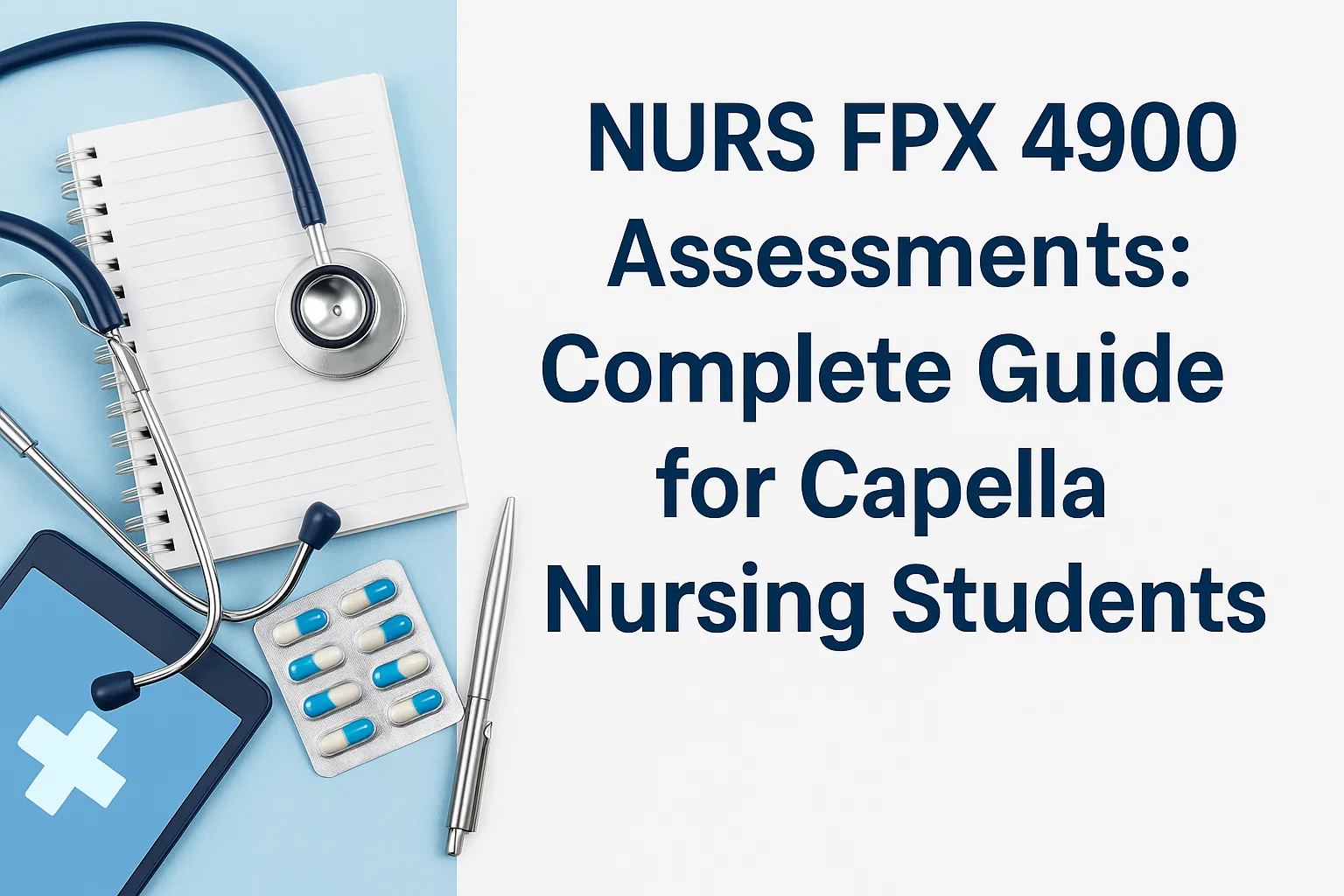Introduction
Sample Nursing Paper on pain management highlights the importance of effective care in post-surgical recovery. Pain relief supports faster healing and improves patient well-being. This sample nursing paper presents a case study of a 45-year-old female who underwent knee replacement surgery. It explores nursing interventions, pain assessment methods, and patient education provided during recovery.
The purpose is to evaluate the effectiveness of nursing strategies in managing post-surgical pain and to offer a comprehensive care plan for similar patients. Ideal for students looking for online nursing papers or hoping to buy nursing papers, this case study provides real-world nursing insights and practical application.
Case Study Overview
Patient Information
- Name: Jane Doe (pseudonym)
- Age: 45
- Gender: Female
- Diagnosis: Knee Osteoarthritis (Unilateral Knee Replacement Surgery)
- The Surgical Procedure: Unilateral Knee Replacement (UKR) is a key part of the patient’s treatment plan. For more detailed information on the procedure, visit this NCBI resource, which provides in-depth coverage.S
- Date of Surgery: January 10, 2025
- Complaint: Severe knee pain due to osteoarthritis.
Medical History: Jane has a history of chronic osteoarthritis that resulted in the need for knee replacement surgery. Additionally, she also suffers from hypertension and obesity. Currently, she is on medications for pain management such as acetaminophen and ibuprofen and is doing physical therapy following surgery.
Nursing Assessment
This Sample Nursing Paper highlights the importance of both subjective and objective data in nursing assessment. The data includes the patient’s self-reported pain levels, vital signs, and physical examination findings. By incorporating these elements, the nursing care plan is developed to ensure comprehensive care. This Sample Nursing Paper also emphasizes the significance of accurately documenting these assessments for effective pain management. Students writing nursing papers or exploring nursing research papers can benefit from this approach, as it shows a clear application of nursing interventions based on reliable data. Lastly, this Sample Nursing Paper serves as a guide to help with nursing writing papers, ensuring that nursing care plans are based on precise and meaningful data.
Subjective Data
- Pain Level: The patient describes the pain in the knee area as moderate to severe, and it becomes worse after physical therapy sessions.
- Patient’s pain scale: 7/10 after therapy and 4/10 at rest.
- Other Symptoms: The patient also reports mild swelling around the surgical site, but no signs of infection (no redness or warmth).
Objective Data
- Vital Signs: The patient’s blood pressure is elevated at 140/85 mmHg as a result of the pain and her history of hypertension. Her respiratory rate is 18 breaths per minute, which is normal, and the temperature is 98.6° F. The pulse rate is 92 beats per minute, slightly elevated.
- Physical Examination: Knee is swollen with a few areas of bruising which is normal for first 48 hours after surgery. Deep vein thrombosis (DVT) is not present and the patient has full range of motion of the unaffected knee.
Nursing Diagnosis
According to the assessment, the following nursing diagnoses are diagnosed:
- Acute Pain: Post-surgical acute pain caused by changes of tissue integrity and inflammation, as the patient reported level of pain (7/10 on pain scale) and presence of swelling around the surgical site.
- Risk of Infection: Post-surgical status and swelling indicate risk for Infection related to surgical incision.
- Physical Mobility Impaired related to surgical procedure, as evidenced by lack of independent ability to perform activities of daily living (ADLs).
- Ineffective Health Management: The patient’s lack of understanding of pain management techniques and post-surgical care was evidenced by ineffective Health Management due to the patient’s anxiety about managing pain at home.
Pain Management Interventions
Sample Nursing Paper focuses on managing pain effectively to promote recovery, prevent complications, and enhance the patient’s quality of life. This sample nursing paper outlines both pharmacological and non-pharmacological nursing interventions used in post-surgical care. The goal of this sample nursing paper is to demonstrate how these strategies can be applied in real-world scenarios, providing valuable insights for students writing nursing papers, conducting nursing research papers, or seeking help with nursing writing papers.
Pharmacological Interventions
- The patient is given acetaminophen 500 mg every 6 hours for pain relief as it is effective for mild to moderate pain.
- Oxycodone 5 mg every 4–6 hours for breakthrough pain is also prescribed for the patient, to be used during physical therapy or when the pain is above baseline.
- Additional pain relief is given to the patient by ibuprofen 400 mg every 8 hours for inflammation and pain.
- Nursing staff monitors the patient’s response to pain medications, looking at any adverse effects from the medications like dizziness, nausea, or sedation. The nurse also makes sure that the patient is not dependent on opioids in any way and that the lowest effective dose is used.
Non-Pharmacological Interventions
- Ice Therapy: Ice applied for 20 minutes per hour post-surgery is highly effective in reducing swelling and giving you relief from pain.
- Positioning: The leg being raised up on a pillow is while being elevated to promote venous return and reduce the swelling in the leg.
- Relaxation Techniques: Deep breathing and guided imagery are relaxation techniques that teach the patient deep breathing exercises and guided imagery to promote relaxation and reduce anxiety.
- Physical Therapy: Also encourages early mobilization and assisting the patient with gentle range of motion exercises to prevent joint stiffness and improve circulation.
Patient Education
- Pain Management: The nurse teaches the patient about the significance of following the pain management plan as described by the doctor: taking the medications in the exact time and in the correct manner.
- Signs of Infection: The patient is given instructions to inform the physician if the patient has signs and symptoms of infection, as evidenced by increased redness, warmth, and fever.
- Post-Surgical Care: The nurse talks about how to take care of the surgical site after the surgery: cleaning techniques and why the area should remain dry.
- Weight Bearing Restrictions: The patient is told what weight bearing restrictions they will have and how to return to normal activities but without straining their knee.
Evaluation of Pain Management Effectiveness
This sample nursing paper emphasizes the importance of continuous evaluations of pain levels, as well as the patient’s physical and emotional responses, to assess the effectiveness of pain management interventions. In this sample nursing paper, regular monitoring ensures that both pharmacologic and non-pharmacologic strategies are achieving desired outcomes. A sample nursing paper like this provides valuable insight into evidence-based nursing practices.
Post-Intervention Assessment
- Pain Level: The patient states that after implementing pain management interventions, the patient’s pain level is 4/10 during physical therapy and 2/10 at rest. This means that the pain control is much improved.
- Vital Signs: Blood pressure is 130/80 mmHg, indicating that the individual is better in terms of pain control and also at reducing stress on their cardiovascular system. Pain medications are not causing adverse effects as pulse and respiratory rate remains stable.
- Mobility: The patient can assist with range of motion exercises with less pain and shows improved mobility and physical function.
- Patient Education Feedback: The patient will verbalize understanding of the importance of following the prescribed pain management plan and postoperative surgical incision care instructions.
Revised Nursing Diagnosis
- Acute Pain – The patient’s pain is now under control (2/10 when at rest) and the nursing interventions are thought to be effective.
- Risk for Infection: If the surgical site remains clean with no signs of infection, it means that the education and post-surgical care plan was effective.
- Impaired Physical Mobility: The patient’s physical mobility has improved, and she can participate in physical therapy with assistance.
- Inefficient Health Management: The patient is now able to understand the pain management and postoperative care, thus minimizing complications.
Conclusion
This sample nursing paper highlights the critical aspects of nurse-sensitive interventions in managing post-surgical pain. Through this sample nursing paper, it becomes evident that nurses play a vital role in reducing patient pain levels, promoting recovery, and preventing complications by combining pharmacological and non-pharmacological strategies. As demonstrated in this sample nursing paper, ongoing assessment, patient education, and emotional support are essential to achieving optimal outcomes. This paper emphasizes the importance of implementing a comprehensive care plan that includes pain control, education, and physical rehabilitation. Ultimately, this sample nursing paper underscores how evidence-based nursing interventions contribute significantly to a patient’s health, comfort, and overall well-being.
Breakdown of Structure
- Introduction
- Brief introduction to the case study topic (pain management in post-surgical patients).
- Sample Nursing Paper introduces the patient details and the surgical procedure, providing a comprehensive overview of the case to highlight the importance of effective nursing interventions.
- Objective of the paper.
- Case Study Overview
- Patient information (age, gender, diagnosis, etc.).
- Relevant medical history and the reason for surgery.
- Description of the patient’s current condition post-surgery.
- Nursing Assessment
- Subjective data: Pain levels and other symptoms reported by the patient.
- Objective data: Vital signs and physical exam results.
- Nursing Diagnosis: It is the process of identifying the key nursing diagnoses from the assessment.
- Pain Management Interventions
- Pharmacological: Pain medications prescribed and rationale.
- Other: Non–pharmacological (ice, positioning, relaxation).
- Patient Education: The educating of the patient in terms of pain management, infection prevention and recovery.
- Evaluation of Pain Management Effectiveness
- Pain levels, vital sign, mobility, and patient feedback post-intervention.
- Reassessment of nursing diagnoses and their resolution.
- Conclusion
- Summary of the case study.
- Reflection on the effectiveness of nursing interventions.
In this sample case study, you will learn how to structure a nursing paper, as well as what is required in patient care. Additionally, it provides a valuable resource for nursing students looking for guidance on how nursing research paper, helping them improve their own papers or case studies.



